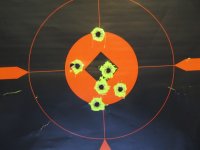I don't like the idea of the guns being able to shoot ammo that they weren't made for and while they may not be unsafe in certain models, they are going to shorten the life of these guns.
I understand your apprehension, but I do not share it to the same degree.
The safety and the longevity of any conversion depends on many factors, nearly all of them specific to the individual gun and the work done on it. If you don't have any experience or education about them, it is prudent to take a "hands off" blanket approach.
I'm not trying to change your mind, but there are things I think you should consider that you may not be aware of.
First of all, remember that you are looking at antique, long out of production guns, and, specific to .455 Webleys the very newest of them is over 90 years old and the overwhelming majority considerably older. They've "been to the wars" both actual war and the use or abuse civilian owners have put them through for a hundred years, or more. And survived.
With all the old guns, there is always a slight chance that their next shot could be their last. Detailed inspection for visible flaws is vital, which is why I consider buying a gun "sight unseen" (and that includes a few pictures on the internet) a risk.
Proof loads do stress the gun. However, it is stress the gun is supposed to take and survive. They are deliberately well above the intended operating pressure and the gun taking them and surviving UNDAMAGED "proves" that the gun will take standard pressure loads safely.
What you're looking at with the .455 and firing .45acp loads is not a "it will blow up" thing, but more of an "it might, eventually, crack" kind of thing. And the extra stress over the correct working pressure is un-necessary, and undesired. Since there is a chance that "eventually" could be the very next shot, we say "Don't DO THAT!"
Another point to remember is that the old guns also sometimes fail when fired with exactly the "proper" ammunition. They're old. Things get worn, metal fatigues, it happens.
If you are going to shoot guns century+ old guns, it is best to know what you are doing, and only do what is appropriate. There are many do's and don'ts that one needs to know to be both safe, and functional.
as a poor analogy, if all you have driven is a 2019 Prius you're not going to be able to jump behind the wheel of a 1928 Oldsmobile and cruise without some issues. Pass your driving test in a car with an automatic transmission, power steering, power anti-lock brakes etc, and you need further training before you can drive an 18-wheeler with a multi-speed split axle manual transmission, or a formula 1 race car...
Another reason the .38 Webleys/Enfields would be better for today's shooter: all of them were made for smokeless.
Yep. Though I would caution against any of them for today's "shooter" if that shooter intends to shoot
a lot.
IDK, but it may be best for shaved .45 Webley owners to load their own ammo using a black powder substitute. I mean, they're pretty much going to have to load their own ammo as nobody is making .45 ACP ammo loaded down to be safely shot in the shaved Webley's anyway.
The Mk V and Mk VI .455s were made for smokeless powder. Black powder or a substitute is not needed for those guns. Earlier mark guns are another matter.
handloading for the converted Webley .455s is the only way you get proper ammo. And, you need to know what the right things to do are, and how to do them.
Like the 1928 Olds I mentioned before, its not the same as things today and you need to know different things, specific to the item in use. For that old car, you not only need to know how to drive a non-syncromesh manual transmission, you also need to know where to get or make LEADED gasoline.
If you just pull up to the pump and run today's gas in it, you WILL need to do repair work on your engine before very long.
Shooting these guns, and doing it safely and without damaging them requires different things than what is common today. Knowing that is the first step. Learning the specifics that apply to the gun you're wanting to shoot is the next step.
another example (just general)
That 9mm +p (or +p+ ) that your Glock gobbles like candy can trash your 1918 Erfurt Luger. Things like that are things you need to know if you're going to shoot the old guns. The info is out there, and can be learned, and lots of people with experience are willing to pass their wisdom along.
Some of it will actually be right!




